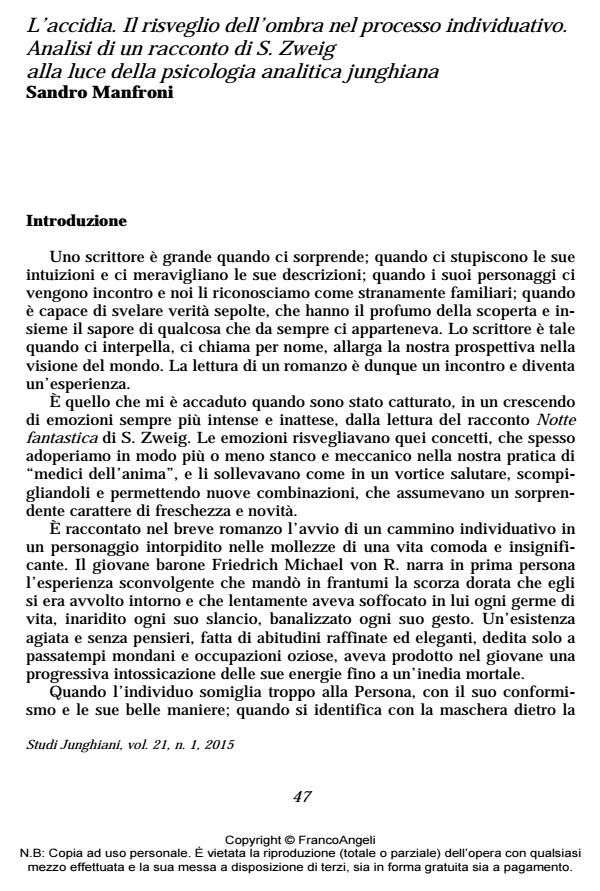Sloth. The awakening of the shadow in individuation. Analysis of a story by S. Zweig in the light of Jungian analytical psychology
Journal title STUDI JUNGHIANI
Author/s Sandro Manfroni
Publishing Year 2015 Issue 2015/41
Language Italian Pages 19 P. 47-65 File size 77 KB
DOI 10.3280/JUN2015-041005
DOI is like a bar code for intellectual property: to have more infomation
click here
Below, you can see the article first page
If you want to buy this article in PDF format, you can do it, following the instructions to buy download credits

FrancoAngeli is member of Publishers International Linking Association, Inc (PILA), a not-for-profit association which run the CrossRef service enabling links to and from online scholarly content.
Only the inexplicable urge to make a baseness allows the Baron Friedrich von Michael R., a young aristocrat choked by inactivity, without interests and ideals, to get in touch with the dark side of his personality, thus reviving his life. Zweig’s novel seems to be a living, breathing example of what Jung referred to as the meeting with the Shadow. The images and metaphors of analytical psychology, describing the psychodynamics underlying each life experience, find a striking correspondence in the insights of great writers, who draw their inspiration from the complex plot of human affairs.
Keywords: Sloth, archetypes, Shadow, Anima, meaning, individuation
Sandro Manfroni, L’accidia. Il risveglio dell’ombra nel processo individuativo. Analisi di un racconto di S. Zweig alla luce della psicologia analitica junghiana in "STUDI JUNGHIANI" 41/2015, pp 47-65, DOI: 10.3280/JUN2015-041005